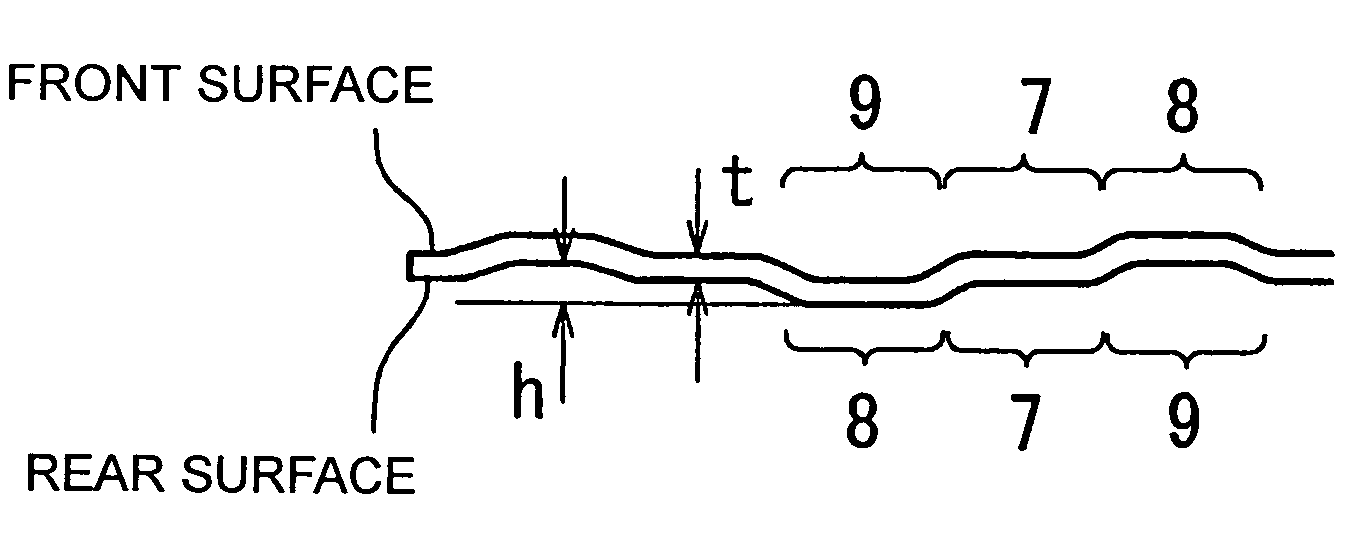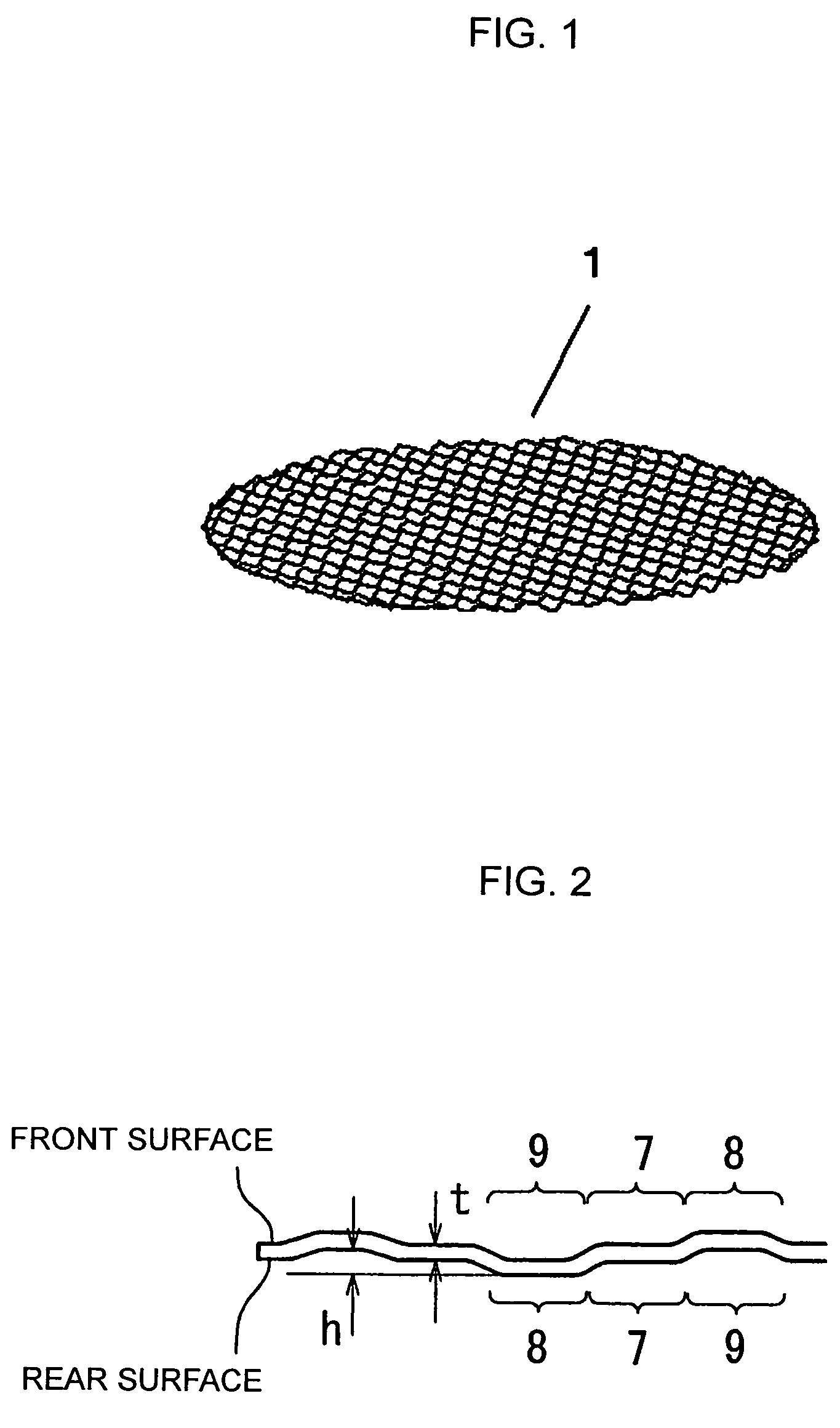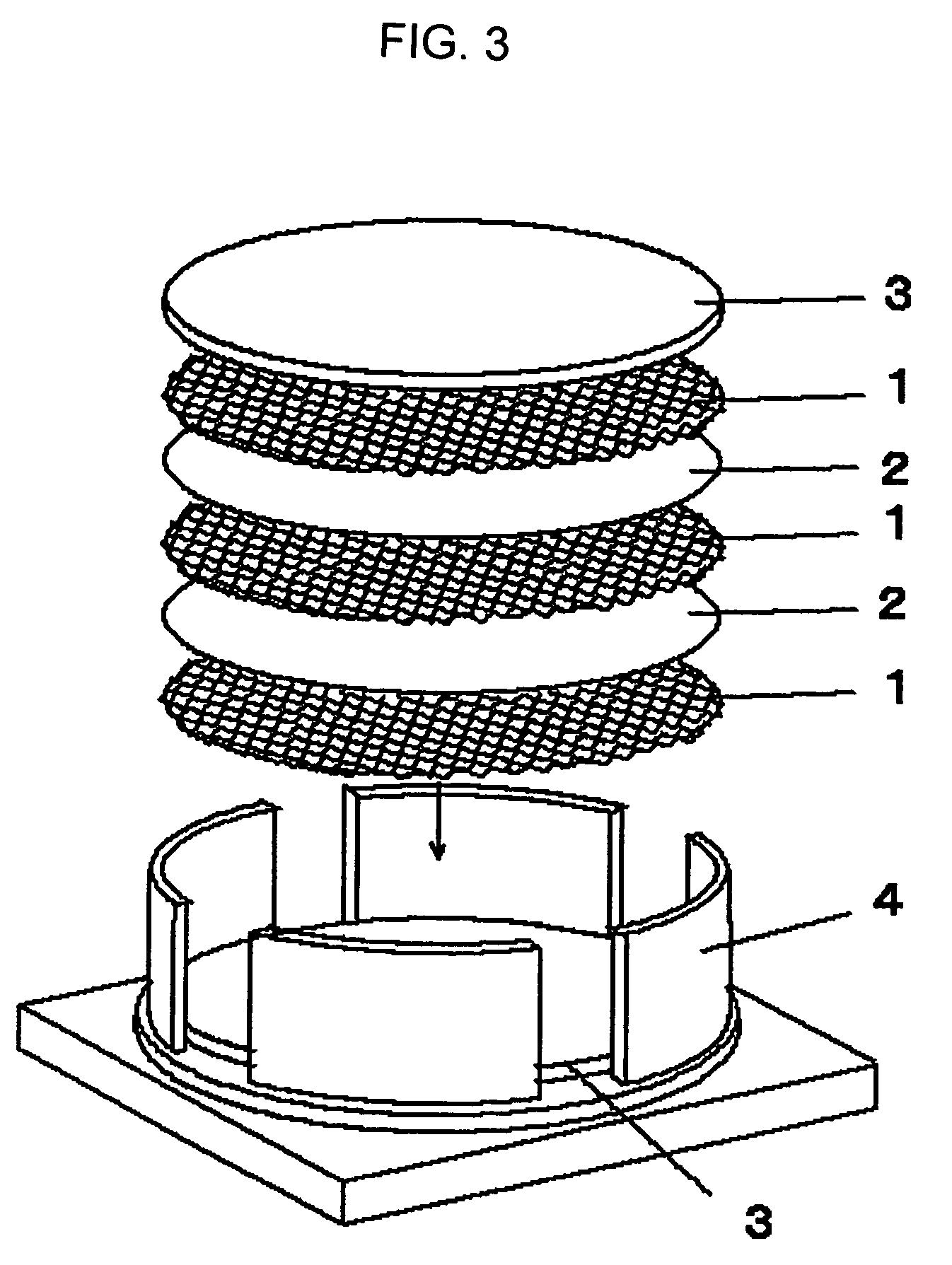Wafer protective sheet
a protective sheet and wafer technology, applied in the field of wafer protective sheets, can solve the problems of easy scratching of stacked wafers, easy scratching of recessed parts of protective sheets, and negative impact of wafer fibers, so as to reduce the possibility of making scratches on the wafer, prevent effective adhesion, and facilitate automatic handling
- Summary
- Abstract
- Description
- Claims
- Application Information
AI Technical Summary
Benefits of technology
Problems solved by technology
Method used
Image
Examples
example
[0034]Into 100 parts by weight of each synthetic resin (high density polyethylene) shown in Table 1 was added 15 parts by weight of a polymeric antistatic agent (PELESTAT 300 produced by Sanyo Chemical Industries, Ltd.) and 1 part by weight of a black pigment. Synthetic resin compounds having flexural modulus shown in Table 1 were thus prepared. The synthetic resin compounds were each formed into a synthetic resin sheet with a thickness t shown in Table 1 by extrusion method.
[0035]The synthetic resin sheet was heated and subjected to embossing with a pair of rolls having many protrusions. The projected parts and the recessed parts were alternately formed in lattice stripes manner on the sheet. The resulting sheet was cut into wafer protective sheets 1 with a press cutting machine of 8 inches in diameter. The height h of the projected parts and recessed parts was 25 μm; the area of each projection or recess was 1.5 mm2 in plan view; the density of the projected parts and recessed par...
PUM
| Property | Measurement | Unit |
|---|---|---|
| thickness | aaaaa | aaaaa |
| flexural modulus | aaaaa | aaaaa |
| height | aaaaa | aaaaa |
Abstract
Description
Claims
Application Information
 Login to View More
Login to View More - R&D
- Intellectual Property
- Life Sciences
- Materials
- Tech Scout
- Unparalleled Data Quality
- Higher Quality Content
- 60% Fewer Hallucinations
Browse by: Latest US Patents, China's latest patents, Technical Efficacy Thesaurus, Application Domain, Technology Topic, Popular Technical Reports.
© 2025 PatSnap. All rights reserved.Legal|Privacy policy|Modern Slavery Act Transparency Statement|Sitemap|About US| Contact US: help@patsnap.com



